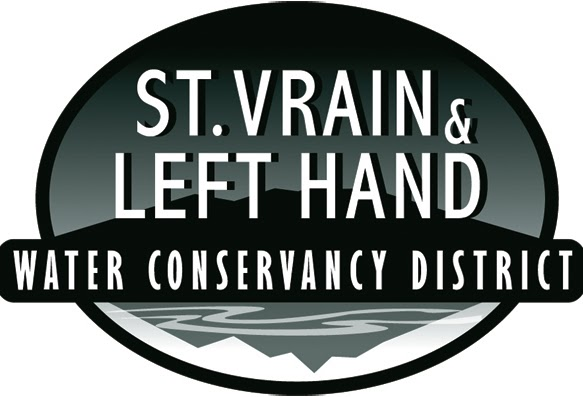Forestry & Fire
Forestry & Fire
- Interested in Forest Restoration? We can help!
- Post-Fire Resources
A History of the Forests of Colorado
Our forests are geologically young, having sprung up after the retreat of the ice sheets at the end of the last ice age some 16,000 years ago. Humans would follow behind not long after with the spread of the Clovis culture across the continent. These peoples would become the Native American tribes of Colorado such as the Cheyenne, Arapaho, Ute, and Comanche.
Because of the dramatic change in environment that comes with the change in altitude in a mountainous environment, Colorado has been host to an enormous diversity of forest types. A drive from Lyons to Estes Park will take you from grassland, through the lower montane Ponderosa forest, mixed conifer, and lodgepole, and within sight of the high alpine forests and sparse mountaintops. This diversity of forest type also comes with a diversity of ecology, including disturbances.
Historically the lower montane forests experienced low-level fires at a high frequency (roughly every decade to 35 years), while higher elevation forests such as the mixed conifer and lodgepole experienced fewer, more extreme fires. Though influenced by human activity such as intentional burning and accidental fires, for most of its history the forests of Colorado have been linked to natural fires, droughts, and outbreaks of pests. This natural history has created a forest that is resilient to disturbance, one that was less crowded with trees and had many more meadows and openings.
This all changed with the arrival of Euro-American settlers beginning in the 19th century. Although Spanish missionaries had been present since the 16th century, it was the westward expansion of the United States that most impacted the forests. First was the gold rush, which created a population boom and the need for construction materials and fuel. Most of the old-growth Ponderosa pine was logged, altering the structure of the forests. Cattle were brought in to graze, further changing the landscape and forest dynamics. As natural fires still continued, the timber industry began a campaign of vociferously extinguishing any and all fires, which caused a buildup of woody material that would have naturally been removed by fire. The fire suppression campaign ramped up in the early years of the 20th century with the US Forest Service, leading to the overcrowded state we see today.
Modern Forest Health and Fire
The forests we see all around the West today may seem picturesque, but they bear the burdens of more than a century of mismanagement. The attempted exclusion of fire has led to an overcrowding of forests and changed the composition of the species of trees. For example, natural high frequency fires would leave open woodland and prevent shade-tolerant species such as Douglas-fir from surviving past seedling stage, favoring species such as Ponderosa pine that are adapted to such a fire regime. Without these frequent fires, Douglas-fir have crowded out Ponderosa at lower elevations and created a closed-canopy forest that is highly amenable to creating catastrophic crown fires.
In addition to forest mismanagement, the accelerating pace of climate change has made for hotter and drier conditions that are a recipe for megafires, as well as extended the fire season. In 2020, three of the five largest fires in Colorado history took place. Wildfires in Colorado burned less than 100,000 acres (40,469 ha) per decade over the 1960s and the 1970s. For the 1980s and 1990s, the total was over 200,000 acres (80,937 ha) per decade. For the 2000s, the total was approximately 200,000 acres (80,937 ha). It is clear that fires are getting worse and will not be going away. So what can we do?
Forest Restoration
Boulder Valley and Longmont are two of several conservation districts around the state and around the country that are enacting forest restoration at scale. This practice differs from previous forest management by seeking to maximize ecological benefits and minimize damaging effects from fires by removing excess trees in a way that mimics the historical range of variability. Backed by decades of research, forest restoration is the key to returning our forests to a resilient and diverse state. What does this look like? It means meadows and openings, diversity in species and age classes, retaining snags and downed trees for wildlife habitat, and a shift from out of control crown fires to manageable ground fires.
Landowner Assistance and First Steps
The Boulder Valley and Longmont Conservation Districts are here to help landowners do the work to return your forests onto a sustainable trajectory, one in which the forest is resilient and diverse. We have a staff of professional foresters who can help navigate landowners through the complexities of forest restoration. This includes the financial assistance that is often required to do this scale of work, which can involve dozens to hundreds of project acres. The first step is to contact us!
What happens next?
After a phone call or email, a forester will come out to do an initial site assessment to determine if your resource concerns and land are suitable for a project with us. Next, we will conduct a scientifically robust inventory and assessment of the forest and write a Forest Management Plan. This technical assistance is of no cost to landowners through grants made possible by the American Forest Foundation and the St. Vrain and Left Hand Water Conservancy District.
I have my plan, now what?
After developing a Forest Management Plan, the landowners can choose to proceed on their own or contract the conservation district to manage the project. This includes securing funding, hiring and managing loggers, and ensuring the project adheres to forest restoration principles. Once the project begins, it will typically take a year or more to complete, and monitoring for invasive weeds for the next several years afterward.
BVLCD forestry efforts made possible by financial contributions from:




